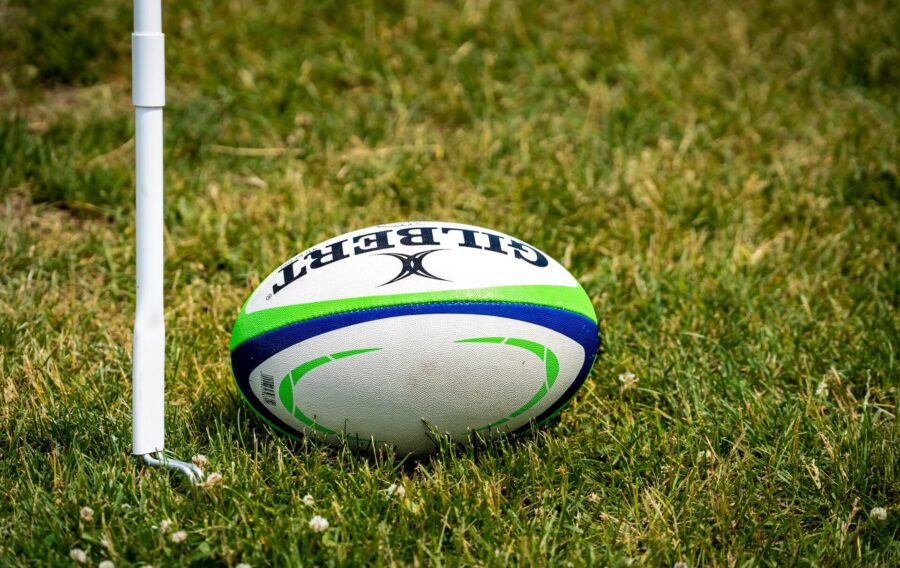The Red Card
On 9 August 2023, Owen Farrell received a red card (upgraded by the Television Match Official under the new “bunker” system from a yellow card) for an act of foul play, contrary to Law 9.13:
“Law 9.13 – A player must not tackle an opponent early, late, or dangerously. Dangerous tackling includes, but is not limited to, tackling, or attempting to tackle an opponent above the line of the shoulders even if the tackle starts below the line of the shoulders.”
When considering whether to order Farrell from the field, the officials would have followed the Head Contact Process (“HCP”).
The HCP
The HCP was first introduced in March 2021 and replaced the old Decision-Making Framework for High Tackles. The HCP was amended in March 2023 to provide further guidance to officials. It is designed to protect the head, neck and throat area of players and categorises tackles on a scale of low danger and high danger.
Under the HCP, contact to the head, which is “high danger,” is when the tackle had direct contact resulting from a lack of control, at high speed, dynamic, reckless, or intentional, amongst other things. Under the HCP, a “high danger” tackle will always result in red if there is no mitigation, and equally, mitigation will not apply for intentional or always-illegal acts of foul play.
Examples of mitigation under the HCP are: if there is a sudden or significant drop in height or change in direction from the ball carrier, a late change in dynamics due to another player in the contact area, an effort to wrap or bind in the tackle, whether the tackler was passive (i.e., planted and absorbing a tackle with no forward movement), or if the tackler had no time to adjust.
The Sanctioning Process
The Foul Play Review Officer who upgraded the yellow card found a “high degree of danger” in Farrell’s tackle under the HCP and referred the matter to disciplinary proceedings per Regulation 17 of the World Rugby Regulations (“WRR”).
The standard of proof in all disciplinary proceedings initiated under Regulation 17 WRR is on the balance of probabilities, i.e., the civil standard of proof.
When considering Farrell’s case, the Independent Judiciary Panel (“IJP”) would have considered the following four-stage test when determining if there would be a sanction:
- Stage 1. The “Red Card Test.” Did Farrell’s act of foul play warrant him being ordered off, or should it have resulted in Farrell being ordered off?
- Stage 2. Assessment of Seriousness. The IJP would have assessed the seriousness of the foul play and identified the applicable entry point for a suspension: i.e., a low-end seriousness attracts a two-week or match ban, a mid-range six weeks, and the top-end ten weeks, with the maximum ban being fifty-two weeks or matches.
- Stage 3. Off-Field Mitigating Factors. The IJP can consider any off-field mitigating factors and whether these factors justify a reduction of the entry point.
- Stage 4. Aggravating Factors. In the same way that the IJP considered mitigating factors, it also would have determined if there were any reasons to increase the sanction.
The Decision
The IJP determined that the Foul Play Review Officer was wrong, on the balance of probabilities, to upgrade the yellow card issued to the player to a red card. The IJP was clear that no criticism is made of the Foul Play Review Officer, going on to say that:
“Unlike the Foul Play Review Officer, the Committee had the luxury of time to deliberate and consider, in private, the incident and the proper application of the Head Contact Process.”
The IJP determined that there was mitigation, as a late change in dynamics resulted from Jamie George’s interaction with the ball carrier in the contact area. On the balance of probabilities, the IJP decided that this contact brought about a sudden and significant change in direction from the ball carrier and that this was sufficient to bring Farrell’s act of foul play below the red card threshold.
Comment
This has been a polarising decision for rugby fans and media alike. There have also been many comments about Farrell’s previous disciplinary record and why this should have been an aggravating factor for the IJP. However, the talk of Farrell’s previous disciplinary record is a red herring, given the IJP determination that Stage 1 of its sanctioning test was not met, meaning it could not assess seriousness or consider off-field mitigating or aggravating factors, as the tackle should never have resulted in a red card.
The media and social media have made much of the near identical tackle committed by Michael Leitch (of Japan) in a warm-up fixture against Samoa on 22 July 2023. As with Farrell, there was interaction with the ball carrier in the contact area before the offending tackle. Whilst Leitch admitted to Stage 1 and that there were no mitigating factors, the IJP determined that the tackle was mid-range, and Leitch was given a three-week suspension, reduced to two weeks as Leitch agreed to “coaching intervention”.
What message does this send to players faced with disciplinary proceedings? Rugby hangs its hat on its core values, including sportsmanship and discipline, and whilst every case is different, given Farrell’s success in defeating Stage 1 of the process, many players may decide to “try their luck” at challenging whether the foul play warranted a red card.
World Rugby says that player welfare drives its decision-making for zero tolerance of foul play, especially where head contact occurs. Former international players were recently diagnosed with early onset dementia due to the frequency of head collisions whilst playing rugby. This is likely why World Rugby has chosen to appeal the IJP’s decision to rescind the red card. If World Rugby succeeds with its appeal, Farrell may find himself on the receiving end of a ban which would undoubtedly mean he would miss most of England’s group-stage fixtures at the Rugby World Cup.
Capital Law’s Sports Team provides specialist advice to teams and individual players facing disciplinary action in all sports. We are ranked Tier 1 in Legal 500 for Sport in Wales. Contact us here



